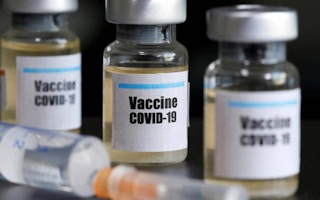Pfizer Inc said on Monday its experimental Covid-19 vaccine was more than 90 per cent effective, a major victory in the fight against a pandemic that has killed more than a million people and infected 50 million.
Drugmakers around the globe have been racing to develop vaccines against Covid-19, but organisations such as the vaccine alliance GAVI have expressed fears that poor nations would lose out in the global race.
Wealthier countries have forged multibillion-dollar supply deals with drugmakers and purchased 3.8 billion doses of potential coronavirus vaccines, leaving few doses available for poor nations, according to a recent analysis by Duke University’s Global Health Innovation Center.
Why has access to life-saving vaccines been so unequal and could the coronavirus pandemic lead countries to unite around an affordable vaccine?
The bigger picture:
Even before Covid-19 hit, access to vaccines was deeply unequal with around 20 million children not receiving vaccines that could save them from serious diseases, death, disability and ill health, according to the World Health Organization (WHO).
An estimated 1.4 million children under five died from vaccine-preventable diseases such as pneumonia, diarrhoea and measles in 2016, according to UNICEF.
The situation could be about to get worse because Covid-19-related lockdowns have disrupted the routine immunisation of millions of children against non-coronavirus diseases like diphtheria, measles and polio.
Approximately 80 million children under the age of 1 in at least 68 countries could be impacted, according to WHO.
Why has getting vaccines to developing countries been so difficult?
The cost of vaccinating a child against diphtheria, whooping cough, hepatitis B, tetanus, pneumonia, polio, rotavirus, was $15.90 in 2018, according to GAVI.
While this may not seem much, this is still beyond the reach of many poor households.
This was why GAVI was set up as an alliance, backed by the Bill & Melinda Gates Foundation, the World Health Organization, the World Bank, UNICEF and others, to provide vaccines to the world’s poorest countries.
Currently, around a hundred drug development teams worldwide, including institutions, biotechs and big pharma companies, are racing to develop vaccines against Covid-19.
“The worry we have is that unless we scale up production dramatically right now, and do that at risk, when the vaccines are available, they could be bought up by wealthy countries,” GAVI’s chief executive officer Seth Berkley said earlier this year.
Do infrastructure and logistics play a role?
Many poor countries lack reliable electricity and cold storage, two elements crucial to keep vaccines effective, and sometimes there are not enough healthcare professionals to administer the vaccines.
Large parts of the world’s population also still live in places without proper roads, running water or telephone connection, making it difficult to contact potential vaccine recipients and deliver to them.
What about politics?
The stability of a country also plays an important role in whether people can access vaccines.
For example, two-thirds of unvaccinated children live in fragile countries or those affected by conflict, according to UNICEF.
Between 2010 and 2016, Syria saw the sharpest decline in vaccinated children, with coverage falling by 38 percentage points, following by Ukraine where coverage decreased by 33 percentage points, the agency added.
This story was published with permission from Thomson Reuters Foundation, the charitable arm of Thomson Reuters, that covers humanitarian news, climate change, resilience, women’s rights, trafficking and property rights. Visit http://news.trust.org/climate.














